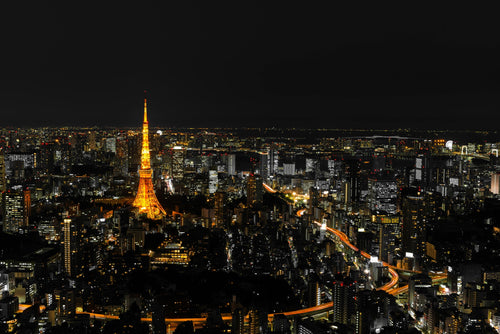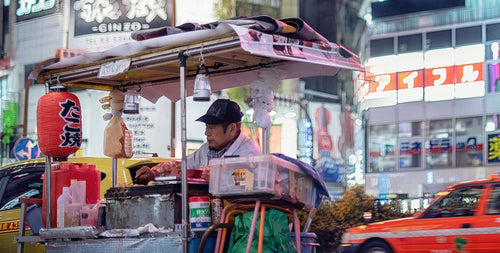
Best Times to Visit Japan for Festivals and Events
Japan is a country that celebrates its rich culture and changing seasons with vibrant festivals and events throughout the year. From centuries-old traditions to modern gatherings, these festivals offer an immersive experience for visitors looking to connect with Japan’s heritage, nature, and community spirit. Choosing the best time to visit Japan often depends on which festivals and events you’d like to experience.
This guide explores the best times to visit Japan for festivals and events, highlighting key celebrations in each season and tips to make the most of your trip.
Contents
1. Spring Festivals (March to May)
2. Summer Festivals (June to August)
3. Autumn Festivals (September to November)
4. Winter Festivals (December to February)
1. Spring Festivals (March to May)
Spring in Japan is synonymous with cherry blossoms and renewal. This season is filled with colorful festivals that celebrate nature and community.
Hanami (Cherry Blossom Viewing) - Nationwide
Cherry blossom season is a highlight of spring in Japan, with parks and gardens hosting *hanami* parties under blooming sakura trees. Cities like Tokyo, Kyoto, and Osaka are popular for their stunning cherry blossom spots.
**Best Time:** Late March to early April.
**Tips:** Check bloom forecasts to plan your visit and arrive early to secure a good picnic spot.
Takayama Spring Festival - Takayama
This festival in Gifu Prefecture features elaborate floats called *yatai*, which are paraded through the streets. The event also includes traditional performances and a nighttime procession with lantern-lit floats.
**Best Time:** April 14–15.
**Tips:** Book accommodations early, as the town gets busy during the festival.
Aoi Matsuri - Kyoto
One of Kyoto’s oldest festivals, Aoi Matsuri features a grand procession of participants in Heian-era costumes traveling from the Imperial Palace to the Shimogamo and Kamigamo Shrines.
**Best Time:** May 15.
**Tips:** Find a spot along the route to enjoy the parade and take photos of the intricate costumes.
2. Summer Festivals (June to August)
Summer in Japan brings lively festivals with vibrant parades, fireworks, and traditional dance performances. The season is perfect for those seeking energetic celebrations.
Gion Matsuri - Kyoto
Gion Matsuri is one of Japan’s most famous festivals, celebrated throughout July. The highlight is the grand procession of *yamaboko* floats through Kyoto’s streets.
**Best Time:** July 17 and July 24 for the main parades.
**Tips:** Explore the pre-parade street parties (*yoiyama*) for food stalls and illuminated floats.
Awa Odori - Tokushima
This traditional dance festival transforms the streets of Tokushima into a lively stage. Groups of dancers perform the unique Awa Odori style while accompanied by shamisen, taiko drums, and flutes.
**Best Time:** August 12–15.
**Tips:** Purchase tickets for reserved seating or arrive early to secure a good viewing spot.
Sumida River Fireworks Festival - Tokyo
This dazzling fireworks display over the Sumida River attracts millions of spectators. It’s one of Tokyo’s largest fireworks festivals and a must-see summer event.
**Best Time:** Last Saturday in July.
**Tips:** Arrive early to claim a spot by the river or consider booking a river cruise for premium views.
3. Autumn Festivals (September to November)
Autumn in Japan is a time of harvest and gratitude. Festivals during this season often feature beautiful autumn foliage as a backdrop.
Takayama Autumn Festival - Takayama
Similar to its spring counterpart, the Takayama Autumn Festival showcases ornate *yatai* floats and a lantern-lit procession, creating a magical atmosphere in the old town.
**Best Time:** October 9–10.
**Tips:** Combine your visit with a stay at a traditional ryokan to fully enjoy Takayama’s charm.
Kurama Fire Festival - Kyoto
Held in the village of Kurama, this fiery event features participants carrying large torches through the streets, culminating in a bonfire near the Kurama Shrine.
**Best Time:** October 22.
**Tips:** Arrive early to secure a spot along the narrow streets and dress warmly for the mountain air.
Nagasaki Kunchi - Nagasaki
This unique festival blends Japanese and European influences, showcasing colorful floats, dragon dances, and performances dedicated to Suwa Shrine.
**Best Time:** October 7–9.
**Tips:** Reserve tickets for the shrine performances to enjoy the best view of the festivities.
4. Winter Festivals (December to February)
Winter in Japan is a magical season with snow-covered landscapes and sparkling illuminations. Winter festivals combine traditional charm with seasonal beauty.
Sapporo Snow Festival - Sapporo
This iconic winter event features massive snow and ice sculptures displayed across multiple sites in Sapporo. The festival also includes nighttime illuminations and ice slides.
**Best Time:** Early February.
**Tips:** Dress warmly and visit Odori Park for the largest display of sculptures.
Otaru Snow Light Path Festival - Otaru
Held in the picturesque town of Otaru, this festival features lantern-lit snow paths and candle displays along the canal, creating a romantic winter wonderland.
**Best Time:** Early to mid-February.
**Tips:** Visit after sunset to fully appreciate the illuminated paths and cozy atmosphere.
Chichibu Night Festival - Saitama
This grand winter festival features lavishly decorated floats and a stunning fireworks display, one of the few held in winter. The festival is dedicated to Chichibu Shrine.
**Best Time:** December 2–3.
**Tips:** Dress in layers and arrive early to explore the food stalls and festival atmosphere before the evening parade.
5. Tips for Enjoying Japanese Festivals
To make the most of your festival experience in Japan, keep these tips in mind:
- Plan Ahead: Research festival dates and locations, as they may vary slightly each year.
- Arrive Early: Popular festivals attract large crowds, so arrive early to secure a good spot for viewing.
- Respect Local Customs: Follow the festival etiquette, such as being quiet during solemn processions or refraining from littering.
- Try Local Foods: Festival stalls often offer regional specialties, making it a great opportunity to sample authentic Japanese cuisine.
- Dress Comfortably: Wear weather-appropriate clothing and comfortable shoes, as festivals often involve walking or standing for long periods.
6. Conclusion: Plan Your Festival Adventure
Japan’s festivals and events are a vibrant celebration of the country’s culture, seasons, and community spirit. Whether you’re drawn to the colorful parades of summer, the serene beauty of spring, or the magical illuminations of winter, there’s a festival for every season. By planning your visit around these events, you can experience the essence of Japan and create unforgettable memories.
Share
You may also like
-

Visiting Japan’s Love Hotel Districts: What to Expect
Japan’s love hotel districts are famous for their unique and fascinating blend of privacy, creativity, and a touch of...
-

Top 10 Late-Night Dining Spots in Tokyo’s 24-Hour Cafes
Tokyo’s vibrant nightlife extends well beyond bars and nightclubs, with a thriving late-night dining culture tha...
-

Best Night Tours in Tokyo for After-Dark Adventures
Tokyo’s nightlife is renowned for its energy, vibrancy, and unique blend of traditional and modern experiences. From ...
-

Japan’s Late-Night Food Culture: 8 Best Street Eats
Japan’s late-night food culture is a vibrant experience, especially in bustling cities like Tokyo and Osaka, where de...
There are currently no related posts.




